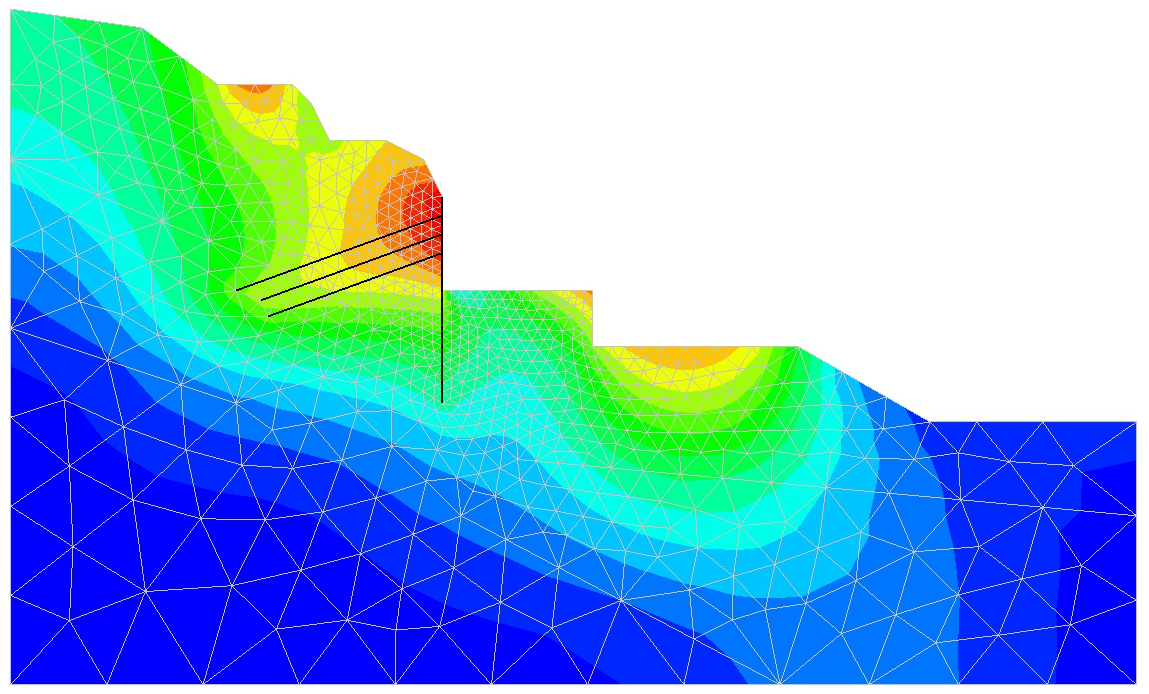CESAR-LCPC SOFTWARE DOWNLOAD
The results of a Finite Elements analysis stresses, displacements fields reflect the mechanical equilibrium of the model. Another methods consists of computing, by means of modal superposition eigenvalues seeking is included , the response of a structure submitted to a dynamic load. The diffusion problems are analyzed under steady- or transient state. Heat Heat analysis is useful for the simulation of several phenomena in Civil Engineering: Mesh of surface regions of plan, revolution or coons type; Regular volume elements mesh of hexahedron, pentahedron or tetrahedron type; Automatic volume mesh generation Volumes are defined by their external surface and are filled of tetrahedrons ; It is possible to extend the mesh by translation, rotations or symmetry. It provides a safety factor against bearing capacity.
| Uploader: | Tenris |
| Date Added: | 3 April 2011 |
| File Size: | 52.98 Mb |
| Operating Systems: | Windows NT/2000/XP/2003/2003/7/8/10 MacOS 10/X |
| Downloads: | 69116 |
| Price: | Free* [*Free Regsitration Required] |
Follow us on our YouTube channel. CESAR computes, by means of direct integration, the response of a structure submitted to a dynamic load; it enables proceeding with a step-by-step resolution of the dynamic equilibrium equation.

Download leaflets General overview - Version Finite Elements library Isoparametric displacement-type elements Tetrahedron. All the algorithms allow definition of mesh refinement by giving density of all the segments:.
CESRA-LCPC: FEA Software for Civil, Tunnel and Geotechnical Engineering
Soil-structure interaction The process in which the response of the soil influences the motion of the structure and the motion of the structure influences the response of the soil is termed as soil-structure interaction Desar-lcpc. Two types of problems have been considered herein: Heat Heat analysis is useful for the simulation of several phenomena in Civil Engineering: All the algorithms allow definition of mesh refinement by giving density of all the segments: CESAR new version 6.
User will also take high benefice from the constitutive laws lab, allowing an advanced soil softaare modelling. In CESAR, this full coupled stress-flow analysis integrates the behaviour of non-linear materials constitutive models. Beam, truss, shell, plates, spring elements, damping elements… for the structure modelling. Safety factor and Strength Reduction methods Cesar-,cpc results of a Finite Elements cezar-lcpc stresses, displacements fields reflect the mechanical equilibrium of the model.
Under continuous development since in order to meet civil engineering standards, CESAR is dedicated to underground works, civil works, soils mechanics, hydrogeology and environmental challenges. The results of a Finite Elements analysis stresses, displacements fields reflect the mechanical equilibrium of the model.
It provides a safety factor against collapse, a limit analysis procedure by piloting the loading sets. This process provides more accurate results than the same analysis with elastic materials or uncoupled assumptions.
More, contact elements and algorithms can be associated to the shell, beam and volumes interfaces so that debonding, slipping or simple friction is correctly modeled. Overview of consitutive models proposed as standard library or user-defined with cesarr-lcpc specific toolbox.
The diffusion problems are analyzed under steady- or cedar-lcpc state. This sequential analysis is fitted for common models. Thus adapted to the project context and geomaterials types, they show value added to geotechnical engineers for a better analysis of earthworks behaviour. Two types of problems have been considered herein:.
CESAR-LCPC | itech soft | Applications
CESAR processes seepage analysis in saturated or non-saturated porous media. Analysis of the foundation behaviour influenced by the choice f the constitutive model: Also, because several structures are suited for parametric design, we integrate assistance cesqr-lcpc the model generation, from geometry tunnels as example to results analysis. Easily coupled with the mechanical algorithms, the temperature gradients, results of the heat analysis, provide correct modelling of the induced stress fields.
User-defined material laws A numerical toolbox of constitutive models has been designed and integrated in the software CESAR-LCPC, proposing elastic laws, plasticity and hardening criteria. Volume elements, spring elements, damping elements… for the soil modelling. Another methods consists of computing, by means of modal superposition eigenvalues seeking is includedthe response of a structure submitted to a dynamic load.
Other materials like concrete or steel are also embedded.
CESAR-LCPC
However limit state or safety-factor analysis is often required for the design of geostructures. CESAR implements several calculation algorithms so that non-linear analysis can be carried out in an efficient and robust manner.
The process in which the response of the soil influences the motion of the structure and the motion of the structure influences the response of the soil is termed as soil-structure interaction SSI. Dynamics CESAR computes, by means of direct integration, the response of a structure submitted to a dynamic sodtware it enables proceeding with a step-by-step resolution of the dynamic equilibrium equation.
Teamviewer Support Teamviewer Demo.

Comments
Post a Comment